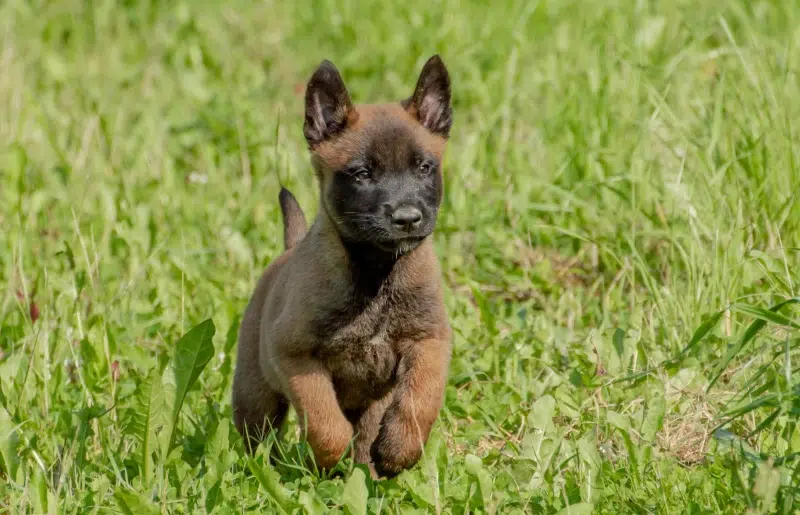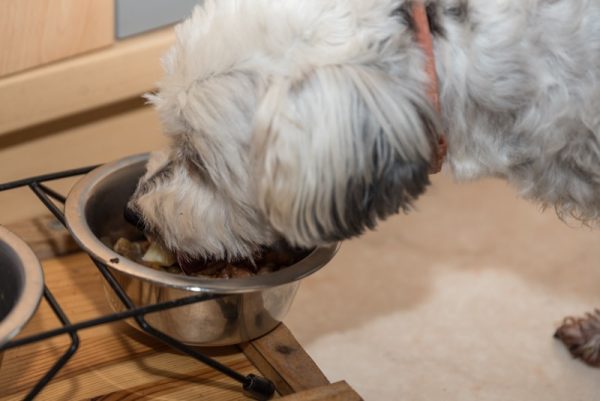In this article
The Belgian Malinois is a beautiful dog commonly mistaken for the German Shepherd (GSD), another lovely dog. Like the GSD, they are renowned for their work with the police and the military.
The Belgian Malinois (also known affectionately as the Mal) is smaller and slimmer but has a longer lifespan than the GSD. They also come in one more color.
In fact, the Mal comes in 12 colors, though only two of these are standard, at least according to the American Kennel Club 1. There is a bit of debate among Malinois breeders and owners about whether these are distinct coat colors or just variations in depth or shading. Here, you can take a look at the two AKC standard Belgian Malinois colors and the 10 non-standard ones, so you can decide for yourself.

The 12 Belgian Malinois Colors
Standard Coat Colors
1. Fawn

Fawn is the most common coat color for the Mal. It’s essentially a beige or café latte color that can range from light to dark. It covers the whole coat with the exception of the muzzle, eyes, and ears, which are black. As the Mal ages, the shade of the color can change over time.
2. Mahogany

Mahogany wood has a deep but rich brownish-red color, which is how you would describe the mahogany coat of this Mal. This coat color is rarer than fawn and can be dark enough that the black muzzle is less noticeable.

Non-standard Coat Colors
3. Fawn Sable

A fawn sable Mal has at first glance a darker fawn coat. But “sable” is a difference in the hair strands. They are a light fawn at the roots and gradually get darker toward the tips.
Many Belgian Malinois owners believe that they have a fawn-coated dog, but it’s quite possible that they have a fawn sable dog instead.
4. Red

A red coat on a Mal is lighter than mahogany and can range from a light to a slightly deep red. Dogs with red coats tend to have black masks, including the muzzle and ears, and this can really stand out against the red.
5. Red Sable

Like fawn sable, red sable is a dark red coat where the hair strands are red at the base and grow gradually darker to the tips.
The sable coloring can be dark enough that the dog can look almost black by the time that they’ve fully matured. The easiest way to determine this dog’s coloring is in the sunlight.
6. Black

Black Mals are black from head to toe, which makes their black masks nearly invisible. Some of these dogs might have a small white patch on their chest and light brown eyes.
Finding an all-black Mal might be challenging because this is a rare color for this breed.
7. Brindle

Brindle is a rare coat color for the Mal. The base coat can be red or fawn with black hair that forms a striped pattern. It has often been compared to a tiger’s coat.
It’s rare because it is a genetic trait, and very few breeds have the genes that produce the brindle coat.
8. Cream

Cream is rare to find on a Mal. This color is paler than the common fawn but is definitely eye-catching! Cream Mals tend to have the typical black muzzle and eyes and ears lined in black.
9. Cream Sable

Like fawn and red sable, cream sable has cream at the base of the hair, which darkens to black toward the tip.
The sable coloring is more pronounced on the cream compared to the fawn and red because of the contrast between the light and the dark.
10. Gray
The gray coloring of this Mal is technically a dilute black and is a rare color for the breed. These dogs are a charcoal gray color that is sometimes considered blue because in certain lights, the gray can look bluish, which is particularly noticeable when they are puppies. Many of these dogs also tend to have gray eyes and noses.
11. Gray Sable
Gray sable is like other sable coats, with the charcoal base color gradually darkening to black at the tips. The gray sable coat is often confused with that of a gray Mal. This is a rare coat color for this breed.
12. Liver
The liver color in the Mal is actually a dilute black coat. It ranges from cream or yellow to red. The color depends on the amount of red pigment, or pheomelanin, in their coat.
This dilute gene will affect the color of the entire body of the Mal, which means they’ll have liver-colored paw pads, eye rims, lips, and nose. They also tend to have amber-colored eyes.

What Are Standard & Non-standard Coat Colors?
The AKC lists standard coat colors for all dog breeds, which are the ones that are recognized and conform to the club’s official standards.
The club doesn’t officially recognize colors that are not standard. What this means is that you can enroll your dog into the AKC, but you can’t have your dog compete in official competitions.
Do Puppies Change Color as They Mature?

Belgian Malinois puppies do not change color as they age, and this includes any markings or patterns that they have. The coat might become darker or lighter, but the color itself, along with any patterns, will remain unchanged for the most part.

Final Thoughts
The Belgian Malinois can make a wonderful companion for the right owner. They are exceptionally devoted and intelligent but need an experienced owner. They come in 12 colors, but only two of these are AKC standard colors.
Regardless of what color your dog is, they are a gorgeous animal that needs plenty of care, attention, and love from you.
Featured Image Credit: Eudyptula, Shutterstock




















2 Responses
Archer (Archie) is about 13 month Cream Mal (I did not know "Cream" until I read your descriptive blog with the stunning pics – thank you for that :>).
He was rescued from a ditch along a wooded road when he was about 3 months.
There were scars on his back legs – black scrapings that I thought were from the underbrush.
With the arrival of Olivia, his 7/8 month Pit/Boxer lil' sis & BFF, I've realized the marks are made by her puppy teeth.
Litter mates must have started it all off.
I have never seen this with any other dog.
Is it easier to "scrape" certain breeds b/c of the make-up of theirs coats?